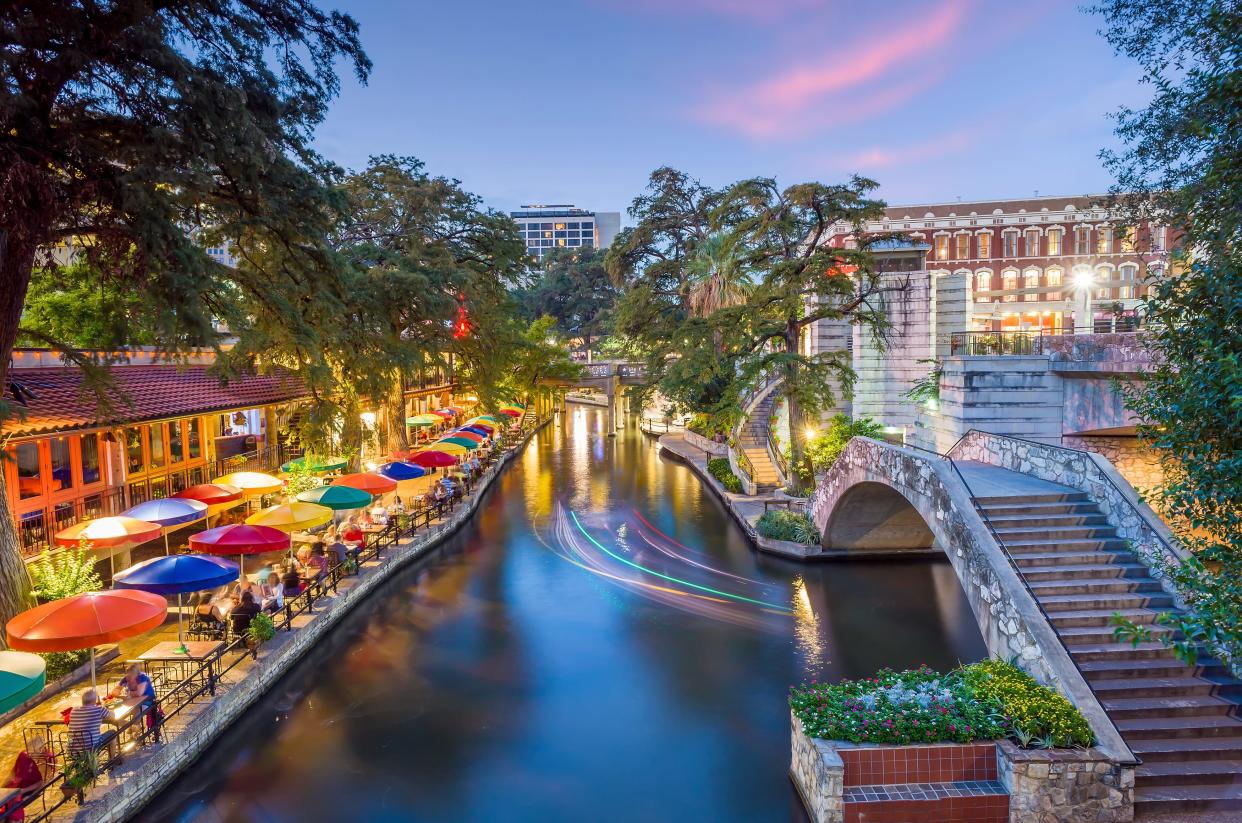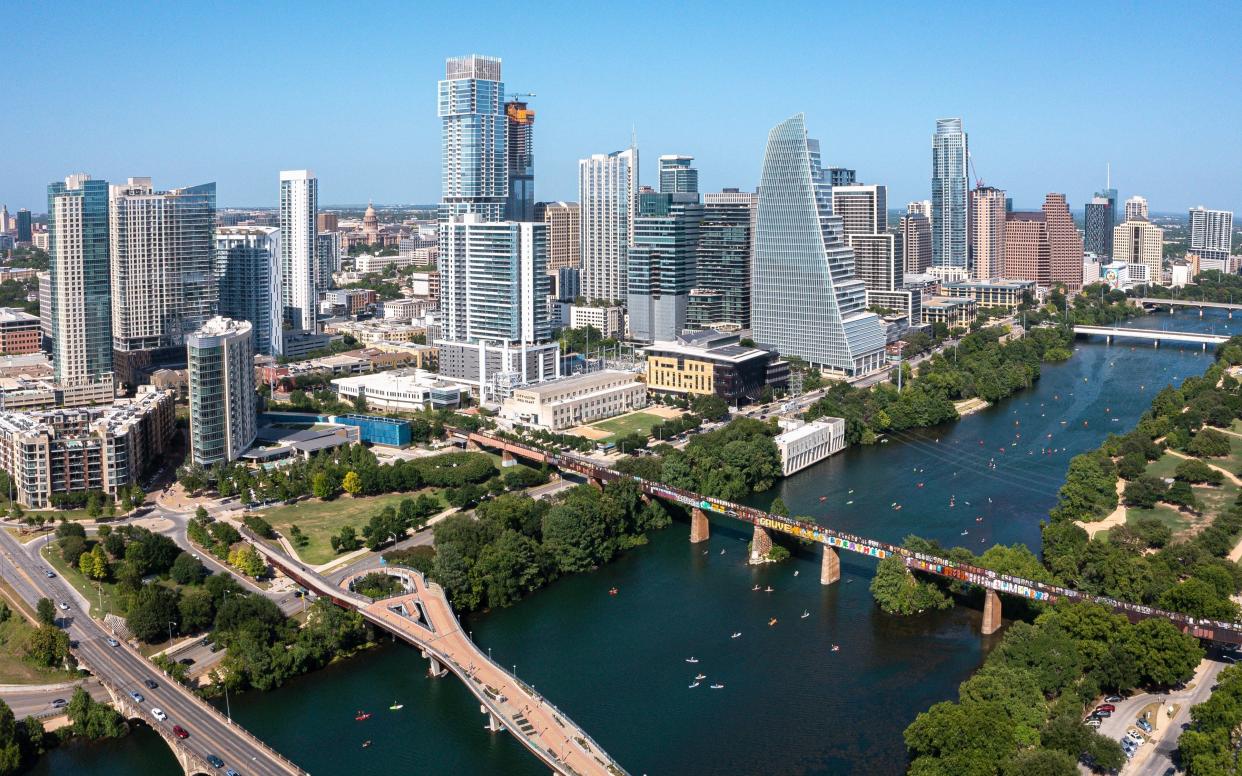Don't look now: Austin and San Antonio are more alike than you think. Here's how.

The message came through loud and clear: "Don't Austin my San Antonio!"
The first wave of responses to my Sept. 12 column on the emerging Austin-San Antonio mega-metro — alternately dubbed San Antonio-Austin — rejected the alliance emphatically.
The cities are so different, the idea of pairing them seemed an insult to the older, larger city to the south. Or at least that was the view of the most fervent San Antonio aficionados.
Since then, I've written five additional columns on San Antonio, four of them based on a short but exhilarating road trip to the city.
The brouhaha has faded.
More: Meet me in San Austin: It's time to explore the idea of an Austin-San Antonio 'mega-metro'
Today, I'm going to stir the pot again by saying that my most recent trip convinced me that Austin and San Antonio are more alike than people think.
Oh sure, one can make a convincing case that the cultures of the two cities diverge in numberless, not insignificant ways. But the similarities are striking.
As you will see.

Taking in the land
San Antonio and Austin, both river cities without being river ports, sit just below the spectacular Texas Hill Country. To the west, gushing springs, crooked creeks and lush vegetation line the limestone barrier of the Balcones Fault. Not only that, the eastern reaches of both cities lie on the fertile, gently rolling Blackland Prairie.
In both places, humankind has altered the land in similar ways. Austin and San Antonio have dammed, altered, channelized, buried and otherwise manipulated their creeks and rivers. And yet, the hearts of both cities lie along the banks of each area's largest river, both of which have been tamed to produce signature landscapes.
Sharing a climate of heat, droughts and floods
While San Antonio historically made a greater effort to attract winter tourists — and military bases — with its climate as a calling card, both cities remain hot and humid for about six months out of the year. They endure long periods of droughts and fierce floods. Newcomers are almost always surprised by these dual threats, but longtime residents know that they come with the territory.
In Austin and San Antonio, those who can afford to do so respond to the brutish summers by moving up to the higher, drier hills to the west, or they abandon Central and South Texas altogether during the worst of the hellishness. They welcome snow birds half the year, then become climate migrants themselves during the other half.
More: Want to visit San Antonio? Readers rave about city while sharing tips on sites, food, fun

Gardens and landscapes are almost identical
It should come as no surprise that two cities located 80 miles apart would share some of the same plant life. Yet during my recent trip, I was taken aback. Before my short visit, I had just returned from trips to New York and Boston, where all I could do is guess at the names of the flowers, shrubs, vines and trees.
In San Antonio, on the other hand, I was surrounded by bountiful familiarity. The same pecans, live oaks and cedar elms, surrounded by lantanas, succulents, yuccas and native grasses. Gardeners in both cities have had plenty of practice adapting to the climate, including infrequent yet deep freezes. I noticed a greater variety of palms in San Antonio, which adds to the city's semitropical allure.
You like the wildlife in one city? Expect them in the other.
Just about every type of wildlife — from armadillos and white-tailed deer to grackles and white-winged doves — that one encounters in San Antonio are also found in Austin. As for their migrating birds, both cities lie squarely on the Central Flyway, with only occasional visitors from the Pacific and Mississippi systems.
Furthermore, with climate change, Austin is looking more and more like San Antonio. Crested caracaras, those handsome Mexican falcons, for instance, once kept to South Texas. These days, they seem as much at home in parts of Austin. When I moved here in the early 1980s, white-winged doves could be seen everywhere in San Antonio, rarely in Austin. Not any more. The large doves have moved north, forcing out the mourning doves and Inca doves in many Austin neighborhoods.
From many came new cultures
While San Antonio is overwhelmingly Hispanic — and its elite Latino families have always played major roles in the city's political and cultural history — uneasy coalitions of Mexican Americans, Anglo-Americans, German-Americans and African Americans, in many ways not unlike Austin, have ruled the city.
"Coalitions" might be too strong a word. Typically, people of color often ended up with the less desirable land with fewer public amenities. San Antonio's "mission Indians" did much of the hard labor during early Spanish rule. Remnants of Coahuiltecan and Lipan Apache communities can be found in South San Antonio.
I was reminded, however, on multiple occasions how much the residents of both cities are open, kind, smart, fun and curious. The pace of daily life might be slightly slower in San Antonio, but in terms of temperament, both communities seem equally attuned to their constituent needs, and equally determined to guard them from degradation.
Boosters vs. low taxers
As David B. Johnson demonstrates on almost every page of his new book, "In the Loop: A Political and Economic History of San Antonio," one of that city's principal divisions cleaved the "boosters" — who wanted to modernize infrastructure in order to attract investment — from those who preferred a small municipal government and low taxes, as well as the "old ways."
We've had a version of that dynamic right here in Austin. The governments of both cities resisted, for instance, paving streets and providing essential amenities for all residents well into the 20th century. You paid most of the cost to pave the street in front of your residence and to add sidewalks. That left plenty of unpaved "skips" to negotiate, and less fortunate residents made do with dirt or gravel roads years until after World War II.
Suburban land grabs
San Antonio and Austin — also Houston and other big Texas cities — saw what happened to Dallas. By the late 20th century, the suburbs hemmed in Big D. Its core population was subsequently outpaced by annex-happy Houston and San Antonio.
In 1963, the Texas legislature granted cities extraterritorial jurisdiction (ETJ) “to promote and protect the general health, safety, and welfare of persons residing in and adjacent to” cities. That allowed Houston, San Antonio, Austin and other cities to expand geographically without stringent limitations. And if they acted quickly, they wouldn't become Dallas.
What happened on the ground was that the metropolitan areas of all these cities sprawled unto the horizons, suburban political units or not. Dallas-Fort Worth's metro population has passed 7.5 million, Houston's is close behind with 7.3 million, and a combined San Antonio-Austin would come in third with just over 5 million.
More: In San Antonio, do visit the Pearl District, a jewel among the city's tourist sites
Rise of tourism and culinary culture
San Antonio enjoyed a big head start attracting tourists, going back to the late 19th century, when visitors sought out its climate and its ancient streets, markets and historical landmarks. Business leaders built hotels quickly. By the 1880s, Austin could boast a just few attractions: an enormous and elaborate Capitol building, a university, one good hotel (Driskill) and some popular swimming holes.
San Antonio rarely paused: It added Fiesta, a first-rate zoo, amusement parks, public gardens, an indoor football stadium, horse racing, Hemisfair '68, and let's not forget the Riverwalk, the city's tourism crown jewel, recently extended up and down the San Antonio River from downtown proper.
In the late 20th century, both Texas cities got more competitive about hosting conventions. They also heated up their respective, innovative dining scenes. Tourists still gravitated to the Tex-Mex, barbecue and steaks.
It was not until Austin added enormous annual festivals such as South by Southwest, Austin City Limits Music Festival and the United States Grand Prix that it could compete in San Antonio's league for raw numbers of tourists.
The pandemic, along with canceled or postponed conferences, festivals and conventions, severely dampened tourism at both ends of the mega-metro during the first years of this decade. The trade is bouncing back.
"Occupancy was still lower than in 2019, but room rates and revenue per available room metrics increased," reported the San Antonio Express-News in June 2023 about SA. "San Antonio’s share of Texas’ hotel market is 10.7 percent, smaller than the Austin, Houston and Dallas metros, but larger than the Fort Worth metro."
More: Not the Alamo: Fields near San Antonio yield evidence of deadliest battle in Texas history
A pair of minority-majority cities
In December, Austin demographer Lila Valencia released the latest takes on the city's population to City Council. Some of the statistics were expected.
Here's one data point that you might have missed: Austin is a minority-majority city, with 53 percent of the population now people of color. In fact, Austin crossed that threshold back in 2010.
The story is different in San Antonio, where a full 65 percent of its population identifies as Hispanic or Latino. Another 10 percent are African American, Asian American or more than one race. While San Antonio is home for far more people of color, both are, demographically, minority-majority cities.
More: Visit 10 sacred Spanish missions and sites in San Antonio to celebrate the holiday season
That matter of size
Perhaps one reason that some city promoters might dislike the notion of a shared mega-metro is that, population-wise, the two constituent metros are almost twins.
Which would win naming rights?
According to Valencia's numbers, Austin proper is home to just under 1 million people, while San Antonio can claim just under 1.5 million. A big lead for SA.
As for metro areas, the race is closer: Austin comes in at 2.4 million, San Antonio at well under 2.7 million. Both rank in the top five fastest-growing metros in the U.S.
Mega-metro anyone?
Michael Barnes writes about the people, places, culture and history of Austin and Texas. He can be reached at mbarnes@gannett.com. Sign up for the free weekly digital newsletter, Think, Texas, at statesman.com/newsletters, or at the newsletter page of your local USA Today Network paper.
This article originally appeared on Austin American-Statesman: Is Austin-San Antonio mega metro coming soon for these similar cities?